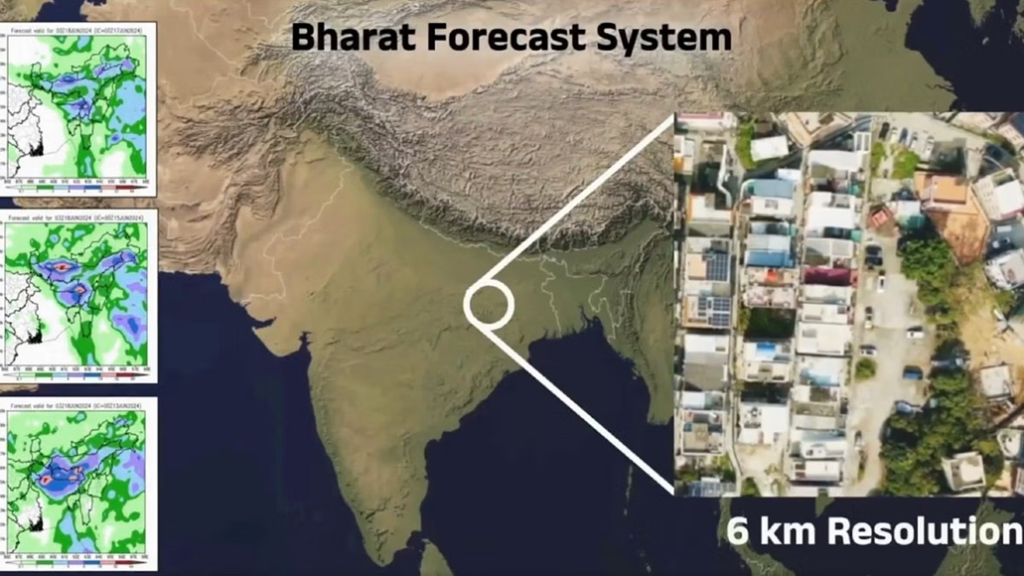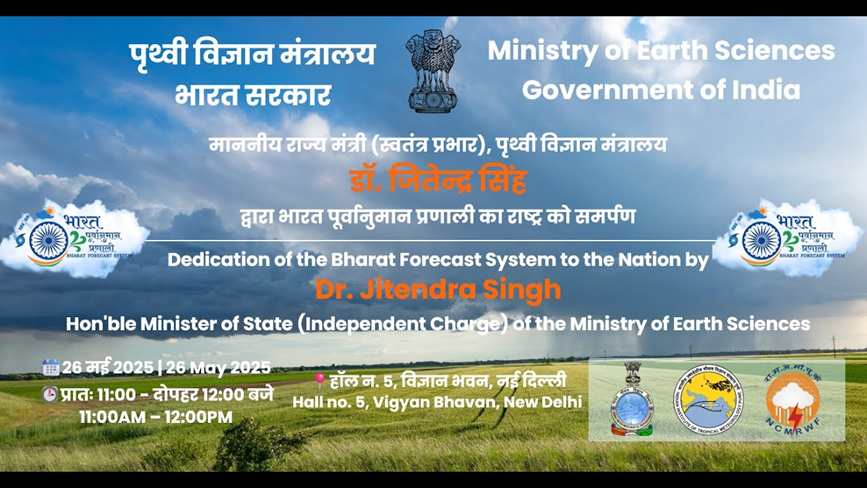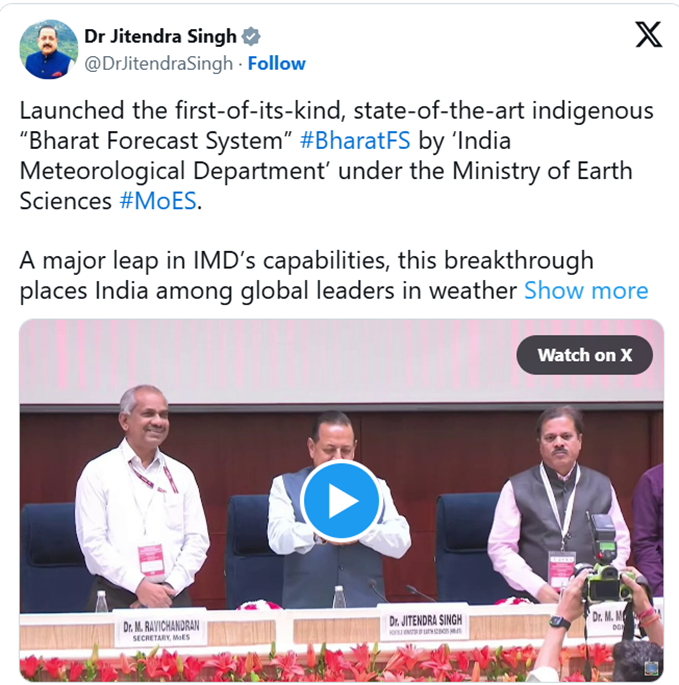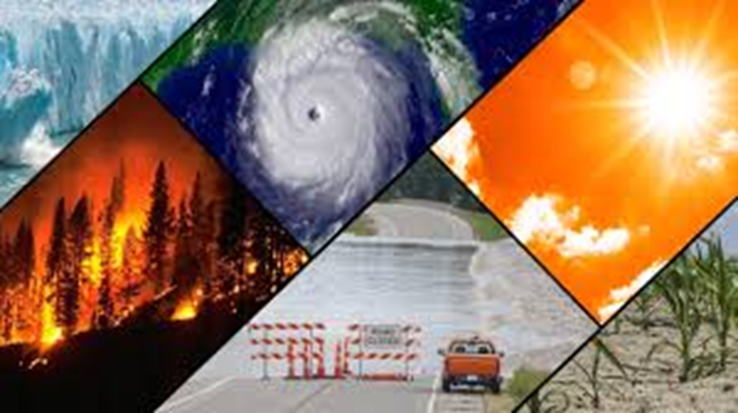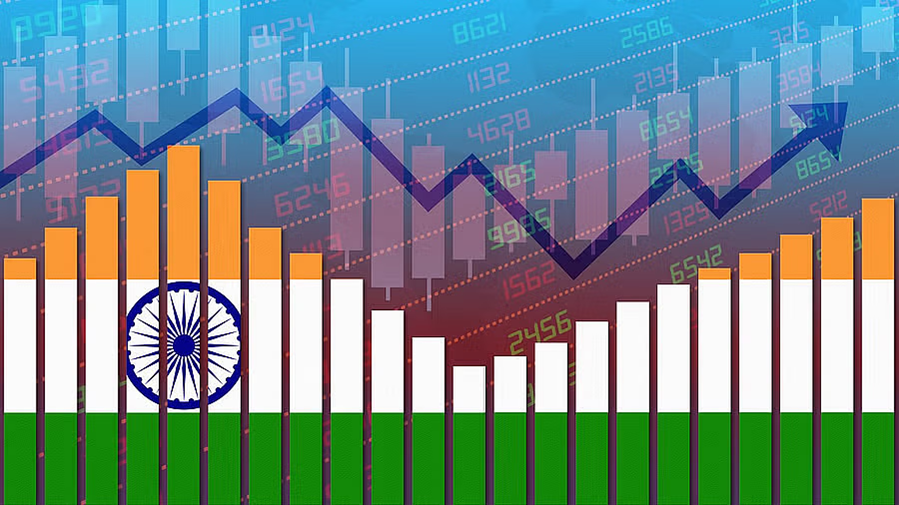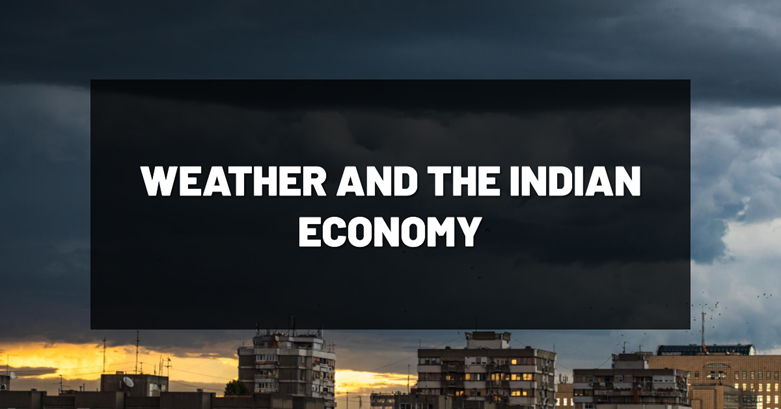India has unveiled an indigenous weather forecasting system that will make the India Meteorological Department’s (IMD) forecasts more accurate. The Union Ministry of Earth Sciences (MoES) launched the new Bharat Forecasting System (BFS) in Delhi. The system has been developed by the Indian Institute of Tropical Meteorology (IITM) and will be operated by the IMD from this monsoon season. Its unveiling comes as India has witnessed an early onset of monsoon rains , with heavy showers battering Kerala and Mumbai.
What Is Bharat Forecast System ?
Why In News
- India has unveiled an indigenous weather forecasting system that will make the India Meteorological Department’s (IMD) forecasts more accurate. The Union Ministry of Earth Sciences (MoES) launched the new Bharat Forecasting System (BFS) in Delhi. The system has been developed by the Indian Institute of Tropical Meteorology (IITM) and will be operated by the IMD from this monsoon season. Its unveiling comes as India has witnessed an early onset of monsoon rains , with heavy showers battering Kerala and Mumbai.
What Is BFS ?
- BFS is a made-in-India weather forecasting system that aims to make the weather department’s predictions more localised and accurate.
- Touted as the world’s highest-resolution weather model, BFS will provide forecasts with a 6 km resolution. This makes it the only numerical weather prediction system in the world deployed at such a high resolution. “The new BFS has a resolution of 6 km at the tropics and around 7-8 km resolution at the poles. The current range of our system is only around 12 km. This will remarkably improve our forecasting accuracy.”
- The current model called the ‘Bharat Forecast System’ can predict weather systems right up to the village and panchayat level, with almost 64 per cent improvement in prediction skills.
- For extreme rainfall events, which are a common occurrence during monsoon months, the Bharat Forecast System has shown a 30 per cent improvement in accuracy as compared to the existing models. It has also shown marked improvement in prediction of cyclone paths.
- Similar systems operated by the European, British and American weather offices have a range between 9 km and 14 km. IITM scientists behind BFS told that, in a first, a version of the global forecasting system (GFS) model has been developed for short and medium-range weather prediction over India using the triangular-cubic-octahedral (Tco) grid.
- This grid structure, used in numerical weather prediction and climate modelling, provides a higher resolution over the tropics at a range of about 6.5 km.
- “The tropical region is a chaotic region for weather. The change in weather patterns is unpredictable and higher resolution models are required to capture the spatial changes,” M Ravichandran, Secretary, Ministry of Earth Sciences, said
- “Earlier, we used to issue one forecast for four villages. The BFS will enable us to issue separate forecasts for each of the four villages,” he said.
How BFS Works
- Developing the Bharat Forecasting System was possible after the installation of the new supercomputer Arka at the IITM campus last year, with a capacity of 11.77 petaflops (a unit to measure computer processing speed) and storage capacity of 33 petabytes – a petabyte is equivalent to 1,000 terabytes (TB).
- “The previous supercomputer ‘Pratyush’ used to take up to 10 hours to run the forecasting model. Arka performs the same data-crunching within four hours,” Mukhopadhyay told PTI. MoES secretary Ravichandran said the data from 40 Doppler weather radars from across the country will be used to operate the weather forecasting model, enabling the weather department to issue more localised forecasts, and nowcasts or weather forecasts for the next two hours.
- The plan is to increase the number of these Doppler radars to 100, which would allow for IMD to issue nowcasts across the country. data from a network of 40 Doppler Weather Radars from across the country will be used to run the BFS model that would enable the weather office to issue more localised forecasts and nowcasts.
Why It matters
- India’s BFS comes at a time when the weather has become more uncertain, with extreme events becoming more common.
- As climate change affects India and the rest of the world, the new weather forecasting system will improve the forecasts by 30 per cent. BFS, which had been on a trial run since 2022, has shown a 30 per cent improvement in the prediction of extreme rainfall events and a 64 per cent improvement in forecasts for core monsoon regions, ThePrint reported. It also displayed improved results for cyclone tracks and intensity forecasts.
- “This is a pretty big improvement, but we will not stop at that. Our efforts will be to continuously better our capabilities,” Ravichandran said.
How Does Weather Impact India’s Economy?
- India’s sticky food inflation rate has always been a headache for the last two years, with frequent extreme weather events being one of the reasons, the government said in its latest Economic Survey.
- Citing data from the Centre for Science and Environment (CSE), the report said that the total crop area damaged in 2024 was higher than in the previous two years due to extreme weather conditions. The government also referred to In .. India Meteorological Department (IMD) data, which shows a significant rise in the frequency of extreme weather events, especially heatwaves. Between 2022 and 2024, heatwaves were recorded on 18 per cent of days, compared to 5 per cent in 2020 and 2021, the report said.
- For long-term price stability, the report suggested developing climate-resilient crops, strengthening data systems to monitor prices, reducing crop damage, and minimizing post-harvest losses.
- Additionally, the Reserve Bank of India in its monthly bulletin had flagged its concerns over impact of weather anomalies on vegetable prices. The RBI bulletin said that temperature anomalies have increased in recent periods, raising the need for faster adoption of temperature-resistant crop varietie .. to support the objective of price stability.
- Within India, the outlook has shown signs of improvement. Inflation, particularly food inflation, has declined more than expected, offering some relief, though global and weather-related risks remain.

